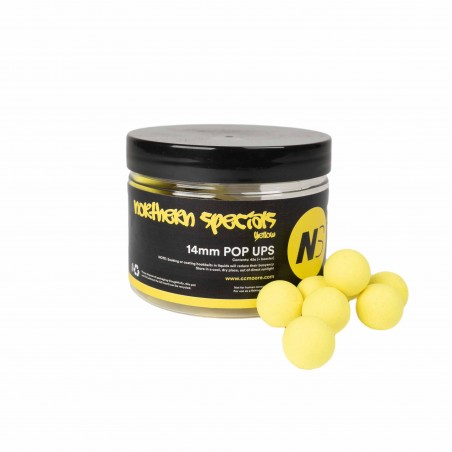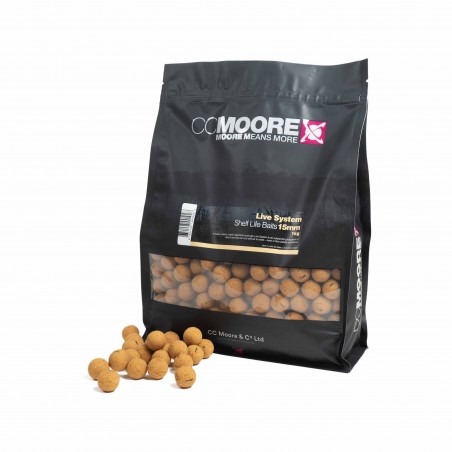Spring has Sprung- Gav Walding
.jpg)
Spring can be without doubt one of the most prolific times in the carp fishing calendar, but, it goes without saying, a carefully considered approach and ability to adapt to the venue in question will certainly catch you more fish! This time of year, can often be a little unpredictable, with the bright sunshine and milder temperatures, you can often get ahead of yourself when it comes to bait application and areas to fish going on previous form. Spring is relatively still a cold period of the year, the carp are only just waking up from their winter slumber and catching them can be tricky still, as they are only just beginning to move and frequent certain areas of the lake once again. This short insight will give you some pointers for spring carp fishing, what I feel are important factors to consider and tactics to employ to get the very best from the lovely (or not) spring weather.
.jpg)
The Search
Like all times of year, finding those fish is without doubt the most important factor when it comes to gaining success. With the lengthening daylight hours and the increasing temperatures, the carp will begin to frequent areas that they haven’t visited for the duration of winter. It is at this time of year, I begin to look in the shallower areas of the lake, especially those that receive the sun. Bays can be particularly good areas, especially those with cover and areas that may get a build-up of natural food. You have to have your wits about you when fishing in the bays, as the last thing you want to do is spook them out before they feel comfortable being there. This is one of the reasons why I feel lack lines are important, to allow fish to drift into an area without coming into contact and spooking off your lines that are present.
.jpg)
.jpg)
Margins
As the temperatures increase, so does the carp’s presence in the marginal areas of the lake. Those margins with shelves and sudden depth changes attract the carp in to feed and presenting small traps at close quarters can be fruitful. It pays where possible to get up trees with a good pair of polaroid’s and look to see what areas are being visited. Tell-tale signs that fish are feeding in the edge also include clouded water and bubbling, so have a good look around and pay close attention.
.jpg)
Travel Light
I travel light and stay mobile for pretty much all my fishing as a matter of course, but it certainly can pay in the spring when the fish are on the move. By travelling light, you are able to stay agile and move when needed without the constraints of having too much gear! The fish are on the move once again and staying one step ahead can be achieved by having minimal amounts of gear and keeping on your toes.
.jpg)
Small Quantities of Bait
The majority of my spring fish is done with singles and small bags of bait, a lot of anglers fall into the trap of going in heavy with bait at the first sign of spring, but the water can still be relatively cold and the carps metabolic rate still low. If I am moving onto fish, I want to keep disturbance to a minimum and therefore the high attract single hookbait comes into play. By using a helicopter rig, combined with a single, I am confident that I will be presented effectively if I get a drop, making as little disturbance as possible.
.jpg)
I always begin my trips in the spring with little bait, but if I do feel they are up for a feed, then I will maybe look to give them some grub to keep them in the swim for longer periods. I still do not like to go too heavy with the amount of bait items present in my mix, preferring a base of boilie crumb with corn; this provides maximum attraction in the swim with little food items to fill them up.
.jpg)
.jpg)
Fresh Winds
Winds during the winter can often feel pretty raw at the best of times, but those warm, early spring winds are much more appealing. The fish seem to love getting on them, especially when they are stirring up the natural food present. I try to monitor the upcoming forecast for changes in the wind and those warmer temperature spikes, planning my trips around those times. You will be pleasantly surprised just how much they influence the carps behaviour.
.jpg)
New Weed Growth
As spring comes around, you will begin to notice fresh, new weed growth in areas of the lake. This new weed growth will be full of naturals and the carp will look to make the most of this. I make the effort to find new growth where possible and present as close to it or if feasible, right in the middle of it. A grappling style lead or an old hook link is a great way of searching out the lakebed for this new growth.
.jpg)
Spring Clean
It pays to have your gear prepped and ready to rock for spring and one of the biggest ones for me is fresh line. I fish weedy and demanding venues throughout the year and line strength is paramount. The last thing you want is to lose a fish right at the start of your spring campaign, due to angler error of your old-line parting. Double check for any kinks and weaknesses in your line before your planned trips and if in doubt, change it and remember to recycle your old line!
.jpg)
Depth Changes
Much like fishing in shallower bays and margins during the spring, bars out in the lake can be a prime area to target. You will quite often see fish ghosting over shallower bars on warm, sunny days, so presenting those bright hook baits bang on top of these can be particularly productive. I am not such much a fan of using zigs, they just haven’t featured in my approach despite how good they can be. I do think thought that when the fish are cruising in the upper layers of the water, a bright, attractive bait positioned on top of a shallower bar can be just too much for them to resist. It also pays to be wary of your line lay and what angle you approach the bar from; if the fish are moving up the bar from your side, it may pay to approach it from the opposite as to now have your line tight across their patrol route.
.jpg)
Priming
I briefly spoke about using small quantities of bait during the spring, but with consistent weather and clear evidence that the fish are active and feeding, I will start to look to do some prep work on spots. I generally like to try and get spots rocking as we move into the warmer period and this means baiting regularity. Before I begin to introduce bait, I will do a bit of prep work with the marker rod and a bare lead, marking up some spots and introducing bait on a little and often basis, ready for me to visit in the coming weeks. I only mean a few handfuls of bait at a time, but the bait you will be using for the duration of the season, just to get the fish used to picking it p and eating it on a regular basis.
.jpg)
Overnighters
Having fished many day sessions during the winter, it is a great relief to be able to get back out on the bank again for overnighters between work. A lot of my fishing these days is overnight sessions and with it not getting dark till slightly later, I can get back into a rhythm of doing so. Being there during the hours of darkness is such a big part of my angling, listening out for them and working out their feeding patterns. Even if I cannot make it down to the lake, I will still try and get down for a walk during the hours of darkness. Using your ears to pinpoint their whereabouts can set you up for trips later in the week or the following week.
.jpg)
Clay/ snags
If your lake contains areas of clay or snags, these are well worth investigating. The fish are hugely attracted to clay and snags, using them to rub up against to clear any parasites they have collected over the winter, plus gain nutrients from the clay. I can recall so many times how confidently the fish in and around these areas and it pays to have a trickle of bait going in to give you options when you are at the lake.
.jpg)
These are a few key points I feel will help you to gain success during the spring. Each year is different and hugely effected by a number of variants including the weather, temperatures and angling pressure. There is certainly no substitute to getting out there and learning for yourself, I am sure the rewards will not be far away!
.jpg)

